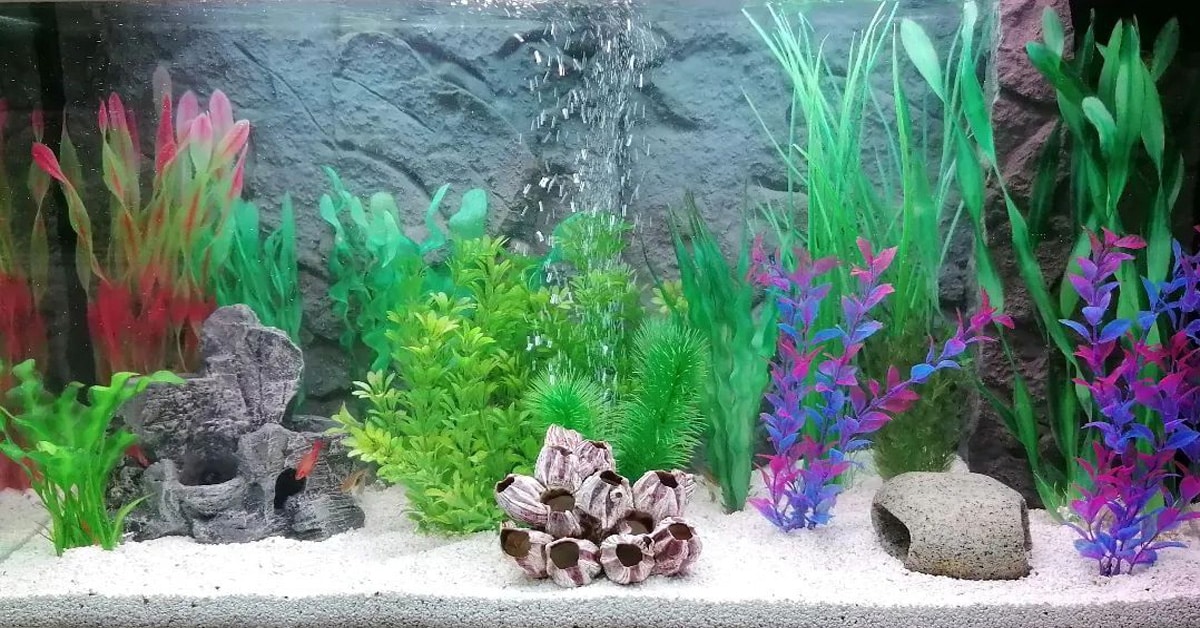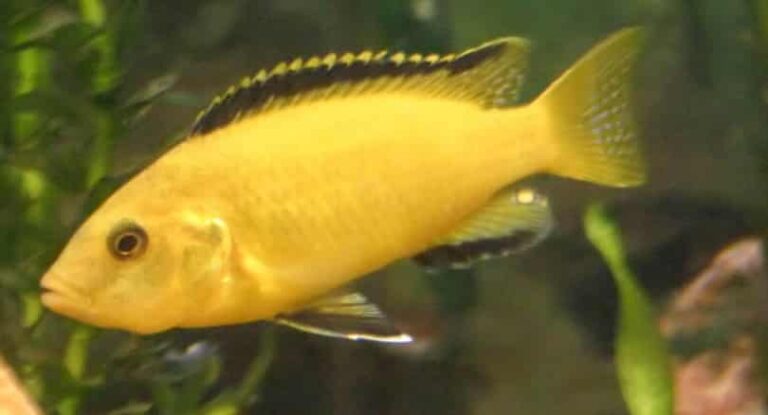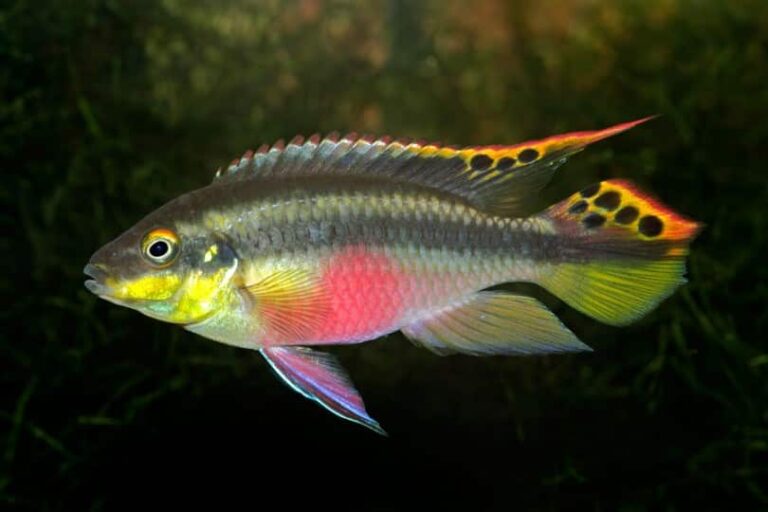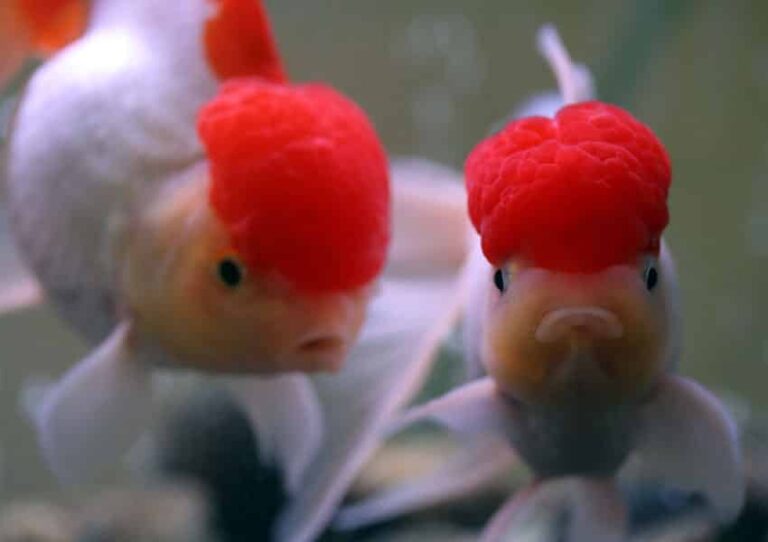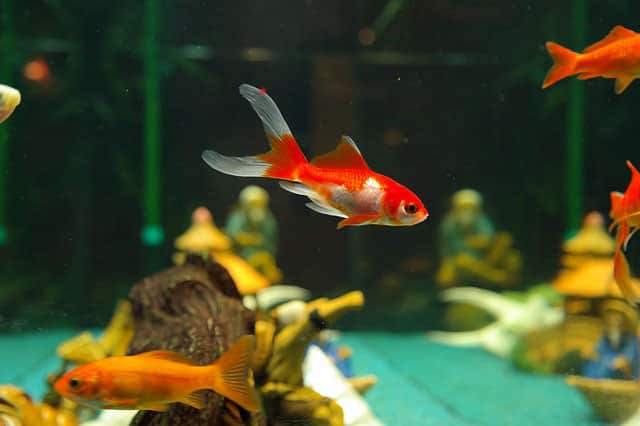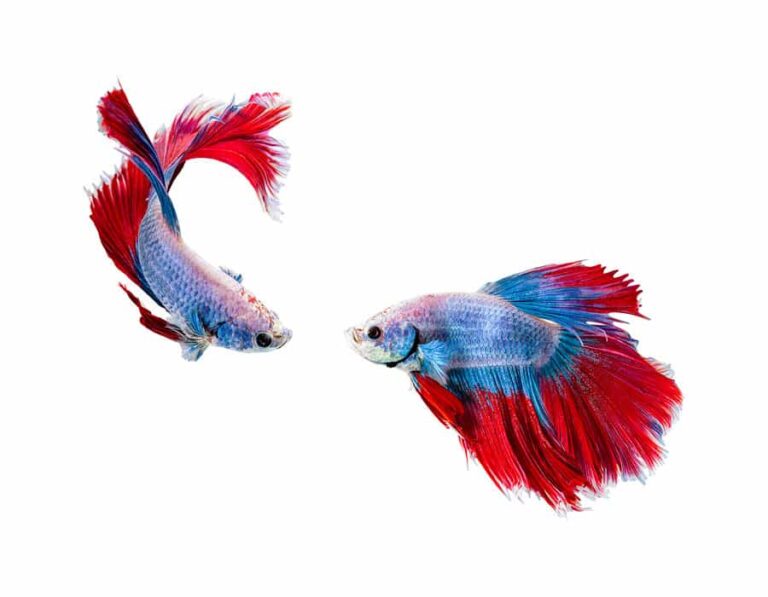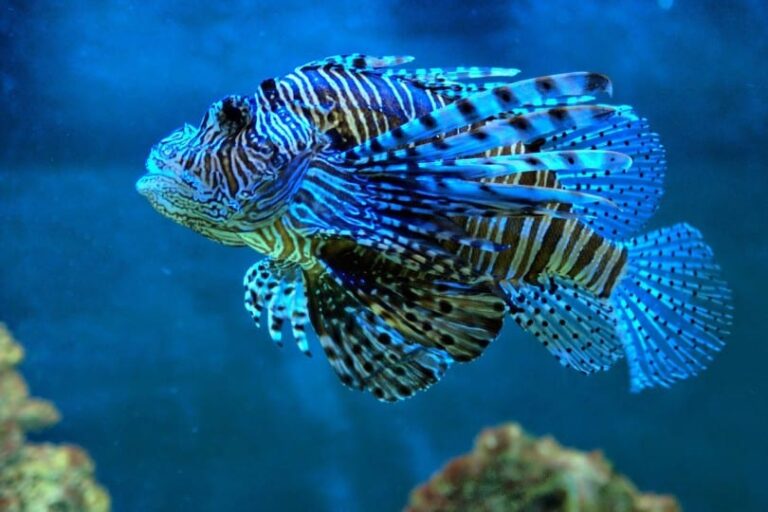Fresh Versus Plastic Plants
An aquarium without plants looks incomplete. Besides making your fish tank appear more natural, plants provide hiding spots for your fish. When you’re setting up your aquarium, you’ll have to make the choice between fresh and plastic plants. Keeping the fish alive is one thing; keeping the plants alive is a whole different story. If it is your first time ever having fish, choose plastic plants. Real plants can be complicated to keep because they require a special feeding and care regimen and your new tank can quickly become overwhelming.
Plastic plants are durable. They will withstand any water quality, and will not die no matter what happens to your tank. Plus, they are easy to clean. They can simply be brushed clean in the sink. Plastic plants come in a variety of colors and styles, including neon varieties that simply aren’t achievable in real plants. However, do keep in mind that bright neon colors can stress your fish. Natural, subdued colors will help them relax; this can actually bring out their natural bright colors.
Silk plants are a step up from plastic plants as far as realism. They are just as easy to clean as plastic plants, but they can be a little more expensive. If you do choose the route of fake plants, always purchase them specifically for aquarium use. Those labeled for reptile use have been coated with fungicides that will leach into your aquarium water. Those made for craft use and floral arranging have unknown chemicals that may harm your fish.
When choosing fresh plants, there is a wide range available, but you will have to keep the tank in mind when choosing suitable plants. Like fish, many plants require a certain water temperature or pH. You’ll want to choose plants that are compatible with the fish in your aquarium. There is no such consideration when purchasing plastic plants.
Real plants are widely available in aquarium supply stores in a wide range of varieties. They lend a more natural appearance to your aquarium. Some aquarists choose real plants because you will likely always be able to tell that plastic plants are not real. Plus, fake plants actually cost more than real plants.
If you are interested in breeding fish, remember that some fish will only breed in an environment with live plants. Tetras will lay their eggs on the bottom of the leaves; they will not do this on plastic or silk plants.
Fresh plants also help to maintain water quality by completing the nitrogen cycle. Live plants use up the nitrates that are created during this cycle. Some tanks with fresh plants do not even need filters because the plants are so efficient at using up the nitrates. Many fish will eat the plants, particularly mollies, platties, and other herbivores. In fact, live plants are one of the healthiest and most natural food sources you can provide them. Fresh plants also produce oxygen.
On the other hand, fresh plants can be hard to care for, often requiring special equipment and lighting. They will need specialized fertilizers, while plastic plants require no additional care. If you have a plant that dies in the tank, there will be lots of waste in the bottom of the aquarium. This decaying plant matter can reduce water quality or even kill your fish.
To care for real plants, you’ll need lighting. Some plants will do fine with no special lighting, just basic aquarium lights. These include java fern and java moss, popular plants for beginning aquarists. Some plants have high light needs, including lace plants and Amazonian sword plants. Remember that lighting is essential for photosynthesis; this s just as true for underwater plants as it is for the plants in your garden. Aquarium plants cannot grow in the dark.
You will also need to fertilize your plants using an aquarium specific liquid plant fertilizer. Do not add gardening fertilizer to your tank; it is not appropriate for aquarium plants. In lightly planted tanks, use this fertilizer lightly or consider skipping it entirely, because it can promote algae growth. However, in most tanks fresh plants will compete against algae, resulting in less algae growth in your tank.
Cleaning your fresh plants can be a bit more difficult than cleaning plastic plants, because you should not uproot them in order to clean them. While plastic plants can be washed in the sink, fresh plants will need to be cleaned as best as you can while they are still in your aquarium. Still, you can expect to see a little buildup of algae as the plants age in your tank. Rub the leaves of the plants gently with your finger to clean them. Always remove any dead parts of the plants as soon as you see them; this process is just like pruning the plants in your garden.
When choosing live plants for your tank, make sure that they are green and healthy. If it is a rooted plant, the roots should be firm, not rotted. When planting a plant that has long roots, cut them down to a couple inches long; these tips will just die anyways, and you can eliminate this decaying plant matter before it even reaches your tank. Stem plants are purchased with either a rubber band or lead weight. Do not bury them with the lead weight, because it can leach into the water. Stems can be planted as a bunch or each individual stem.
You may also want to choose plants based on the natural habitats of your fish; it helps to understand the environment where your fish naturally lives when choosing plants, real or fake. To plant live or plastic plants, be sure to anchor them firmly to the bottom of the tank, or they may become uprooted and float to the surface. Sand or small gravel generally works better for heavily planted tanks than large rocks. Some plants are meant to float on the surface; these are particularly good choices if you have used larger rocks for the substrate.
Overall, healthy live plants can improve the habitat for your fish, but plants that are not cared for and that are always dying off will harm your fish. Only you can make the decision of whether fresh plants are worth the additional upkeep.

Having discovered a fondness for insects while pursuing her degree in Biology, Randi Jones was quite bugged to know that people usually dismissed these little creatures as “creepy-crawlies”.

